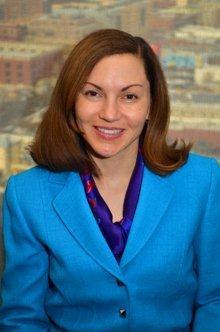A Process to Ensure Disciplined Legal Efficiency
By Jennifer J. Salopek
Jim Altman, vice president of the Legal Department and deputy general counsel at Xcel Energy, had his “a-ha!” moment about a year ago — the moment he knew that his department had changed its internal culture for good. As he was visiting with his colleagues in Xcel’s Denver office, a legal department secretary approached him to suggest that the department begin conducting exit interviews: With no fear of repercussion, these interviews could represent a golden opportunity to get unfiltered feedback and suggestions from departing employees. That the suggestion was made at all, to Altman directly by an administrative employee, told Altman that things had truly changed. “That conversation would not have happened five years ago,” he says.
With the appointment of General Counsel Scott Wilensky in 2011 and a new CEO slightly before that, Xcel began its value journey in 2012. Still recovering from the recession, this Fortune 250 company had been challenged in its ability to grow the business. “We realized we had to do more with less,” Altman says. Although the Legal Department had talked about some value initiatives previously, “[w]e hadn’t been very disciplined in our approach. We needed a concerted, focused effort.”
The Xcel Legal Department employs about 130 people in Minneapolis and Denver, including three managing attorneys, 14 paralegals, 40 lawyers, administrative staff, and claims investigators. The department’s work includes regulatory, environmental, litigation, real estate, labor and employment, and transactional matters. Altman, who has been with the company for 28 years, describes it as being “like a small law firm with an incredibly good client base.”
To get the new value effort off the ground, Wilensky created the Legal Efficiency Strategies (LES) Committee, charging its members to identify and implement ways to achieve zero growth in outside counsel costs, while also maintaining a high level of client services. The makeup of LES was intentionally diverse, comprising six attorneys, one paralegal, one member of the claims group, and the office manager.
“These different perspectives and viewpoints enabled us to get buy-in from the entire department to focus on efficiency and cost savings,” Altman says.
The committee’s research process, which took about six months, included:
- interviews with internal and external resources and stakeholders, including department staff
- interviews with representatives of four outside law firms and members of two other in-house legal departments, Nextera (formerly Florida Power and Light) and United Health Group
- reviewing company budget information for trends
- research on alternative fee arrangements
- identifying materials related to cost savings, client structures, and so forth
The committee eventually issued 10 recommendations in three major areas: budgeting and forecasting, cost reductions and efficiency improvements, and implementation tools.
The process definitely generated some surprises: “I thought people would be skeptical or unwilling to participate. I was expecting to have to twist arms,” says Altman. “But we discovered that people felt very strongly about this issue, and that they were willing participants.”
There was considerable consistency in committee members’ and interviewees’ observations, not least of which was that the Legal Department’s budgeting and forecasting process was cumbersome, time-consuming, and not very helpful. The consistency of those observations “told me it was a good process, and exactly what we ought to be doing,” Altman says.
For each of the 10 recommendations, LES developed a summary and detailed evaluation identifying the root cause addressed, an implementation plan, estimated cost savings, challenges and risks, and “low-hanging fruit.” Once the recommendations were accepted, four management initiatives were adopted:
- department and individual employee goals were set and tied to compensation.
- a consultant was retained to review best practices regarding billing and matter management tools.
- three key business areas – nuclear, transmission, and energy supply – were assigned a Legal Department liaison.
- an e-discovery manager was hired.
Six subcommittees were formed to implement the LES recommendations, overhauling everything from budget and forecasting to outside counsel relationships and requirements. One subcommittee created a playbook that houses all key department information and processes in an online database. Another identified and completed lower-cost options and alternative fee arrangements with outside firms, including secondment programs, hiring contract lawyers, an apprenticeship program, “loyalty” hours, and so forth; about 25 to 30 percent of Xcel’s outside legal spend is now under alternative fee arrangements. New guidelines for outside counsel now define the relationships; many of these same counsel had been consulted during the LES research phase.
“The reaction from outside firms was really quite positive. They have a perspective on a lot of corporate clients and were very willing to work with us,” Altman says.
The initiative’s results have been meaningful. Xcel realized a 7.5 percent reduction in outside spend in 2014 as compared to 2012, and it didn’t lose sight of its secondary goal: maintaining quality of legal services that business clients require. The Legal Department realized an increased overall client satisfaction rating from 5.87 to 6.09.


